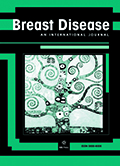Authors: Afzal, Fatima | Aiman, Wajeeha | Zahoor, Hafsa | Bajwa, Ayfa Riaz | Kazmi, Syeda Hafsa | Anwar, Aqsa | Anwar, Muhammad Yasir | Rashid, Sana | Zubair, Hina | Kashif, Tooba | Ashar Ali, Muhammad
Article Type:
Systematic Review
Abstract:
Breast cancer (BC) is the 2nd most common cause of cancer-related deaths. Antibody-drug conjugates (ADCs) are monoclonal antibodies linked to cytotoxic agents and are directed towards a specific tumor protein. Therefore, they are more potent and can have relatively less toxicity. In this meta-analysis, we assessed the efficacy and safety of ADCs in breast cancer. We searched PubMed, Cochrane, Web of Science, and clinicaltrials.gov for relevant studies and included 7 randomized clinical trials (N = 5,302) and 7 non-randomized clinical trials (N = 658). R programming language software was used to conduct this meta-analysis. In 4 RCTs on HER-2 positive
…BC (N = 2,825), the pooled HR of PFS and OS was 0.72 (95% CI = 0.61–0.84, I2 = 71%) and 0.73 (95% CI = 0.64–0.84, I2 = 20%), respectively in favor of ADCs versus chemotherapy. In RCT on triple negative BC (N = 468), HR of PFS and OS were 0.55 (95%CI = 0.51–0.61) and 0.59 (95% CI = 0.54–0.66), respectively, in favor of saci-gov versus chemotherapy. In RCT on HER-2 positive residual invasive BC, HR of recurrence/death was 0.61 (95% CI = 0.54–0.69) in favor of ADC versus chemotherapy. In an RCT (N = 524), the HR of PFS and OS were 0.28 (95% CI = 0.22–0.37) and 0.55 (95%CI = 0.36–0.86), respectively, in favor of trastuzumab-deruxtecan (T-der) as compared to trastuzumab-emtansine (T-DM1). Anemia, rash, diarrhea, fatigue, hypertension, thrombocytopenia, and elevated aminotransferases were the common ≥grade 3 adverse events reported in 4%, 1%, 2%, 1%, 2%, 9%, and 3% of the patients, respectively. ADCs were more effective than single and double agent chemotherapy in patients with HER-2 positive or triple negative BC. Among ADCs, T-der was more effective than T-DM1.
Show more
Keywords: Breast cancer, antibody-drug conjugates, trastuzumab-emtansine, trastuzumab-deruxtecan, sacituzumab govitecan
DOI: 10.3233/BD-220052
Citation: Breast Disease,
vol. 42, no. 1, pp. 121-136, 2023
Price: EUR 27.50





